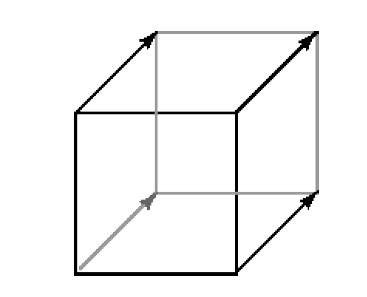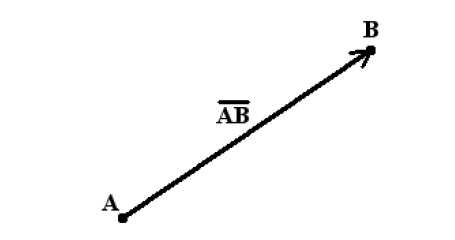
- DirectX - Home
- 3D MATHS
- 3D Maths - Vector Algebra
- 3D Maths - Matrix Algebra
- 3D Maths - Transformations
- 3D Maths - DirectX Math
- DIRECTX
- DirectX - Overview
- DirectX - Installation
- DirectX - Components
- DirectX - Tools
- DirectX - Creating App
- DirectX - Window Events
- DirectX - App Lifecycle
- DirectX - Direct3D Initialization
- DirectX - First HLSL
- DirectX - Graphics Pipeline
- DirectX - Buffers
- DirectX - 3D Transformation
- DirectX - Drawing
- DirectX - Rendering
- DirectX - Modeling
- DirectX - Lighting
- DirectX - Texturing
- DirectX - Multi Texturing
- DirectX - Blending
- DirectX - Picking
- DirectX - Stenciling
- DirectX - First Shader
- DirectX - Pixel Shader
- DirectX - Geometry Shaders
- DirectX - Compute Shaders
- DirectX - Shader Effects
- DirectX - Quaternion
- DirectX Resources
- DirectX - Quick Guide
- DirectX - Useful Resources
- DirectX - Discussion
3D Maths - Vector Algebra
The 3D mathematical model always refers to vectors as their basic points. In geometry and 3D mathematical model, a point is a location in space. A point does not have any predefined size, the only unique property it includes is location. With respect to computer graphics, a point is usually considered as a vertex of 3D figure.
The following figure refers to the schematic representation of vector −

A point indirectly defines a vector. A geometrical vector includes two major properties which are mentioned below −
- Length
- Direction
Length defines the distance between start and end point. Direction includes the path where a vector defines its initial and end point. The vector will never include a fixed location in space. If this happens, then it is considered as a line segment. This property makes 3D computer graphics easy to understand and interpret.
This combination of "distance and direction" for a vector is referred as a displacement. Most often the same displacement is applied to each of several points in 3D view. The best illustration for this is a cube. The front face includes four vertices which can be referred as four points. If a user tries to move the same distance and direction from each of these points for a specified cube, it is observed that you reach the four vertices of the back face.
The "same distance and direction" is a vector, shown in the figure above as a line with an arrow head. The snapshot shows the representation of one vector four times, once for each point of the face. Now let us focus on various terminologies of a vector.
Definition of Vector
A vector can be defined as an object which includes both magnitude and direction. The schematic representation of a vector can be considered as a directed line segment. It includes length in magnitude and with an arrow indicating the direction. Certain terminologies are equally important for a vector which are mentioned below −
Initial Point − For a vector AB, A is referred as an initial point.
Terminal Point − For a vector AB, B is referred as an terminal point.
Magnitude − The total length between initial point and terminal point of a vector i.e., from A to B is referred as the magnitude or length of the vector AB.

Now let us focus on various types of vectors which will be beneficial for our tutorial point of view.
Types of Vectors
The following are the types of Vectors −
Zero Vector/Null Vector − A vector whose initial and terminal points coincide as a single point is referred as zero vector.
Unit Vector − A vector whose length is unity, i.e., 1 is said to be unit vector. The representation is a so that | a | = 1.
Collinear Vectors − The vectors which are parallel to the same line, are considered to be collinear vectors.
Co-initial Vectors − Two or more vectors having the same initial point are called co-initial vectors.
Negative of a vector − A vector whose length is same as that of a given vector AB, but the only difference is with respect to direction, is known as negative of vector AB. The representation is mentioned below −
BA = AB
Equal Vectors − If two vectors ar and br have the same length and direction without any dependency of the positions of their initial points, such vectors are said to be equal. It is represented below −
a r = b r